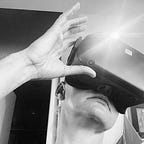Around The World in Augmented Reality
Although it’s not really my intention, I’ve noticed that I take trips on five year cycles. I went to South Africa for the first time in 2012 and returned last year; my first visit to Japan was in 2013 and I’m just returning from a two week sojourn. If we figure the next time I come to Japan will be 2023, how will augmented reality shape my next trip? I’ll make some pretty big assumptions, but nothing out of line with what others in the market have been saying.
In five years, we should not only have stylish and widely available head-mounted displays, but also a robust AR cloud to power all the data we’ll need to make sure the displays have some utility. From the moment I step off the plane, signs will be translated into my language of choice. The translations won’t be poetic (we’re a long way from reading novels via translation apps), but it’ll be functional in terms of reading signs and menus. If I’m curious about a menu item, I can also use AR to visualize what it’ll look like to make sure I’m getting what I want. If some of the food is particularly visually appealing, I can also use the camera on the HMD to snap a quick pic and push to socials, or livestream some amazing sushi making or cocktail shaking. When I splurged on some drinks at the Park Hyatt bar, a few friends commented that they wished they were there — now I can just switch on a livestream and let them see if through my eyes.
One the biggest challenges when navigating a new city is using maps to get around — phone maps are a massive step up from the old paper maps some of us remember, but they still require us to look down for the most part — not the greatest user experience when you want to take in the sights and sounds of a new place (not to mention that you’re far more likely to walk into people and traffic). HMDs will allow us to look ahead as we stroll around, and we’ll even be able to take augmented reality tours, led by cultural figures or cartoons.
If the HMDs have robust voice interactivity, this will also make everyone’s lives a little easier. Having robust and meaningful cross- language conversations in real time might be further off, but if you’re talking about something simple like a food order or subway directions, then you could hear a rough translation and be able to answer — and presumably, the other person’s HMD would allow them to hear and respond in near real time.
It’s always shocking to think about how we traveled before the tech we have now — I can’t remember a world without ride-hailing apps and cannot imagine how people navigated cities where they didn’t know the language (although of course they did). In a few years, it’s not crazy to think that we’ll look back on a world with AR and wonder how we ever managed.
